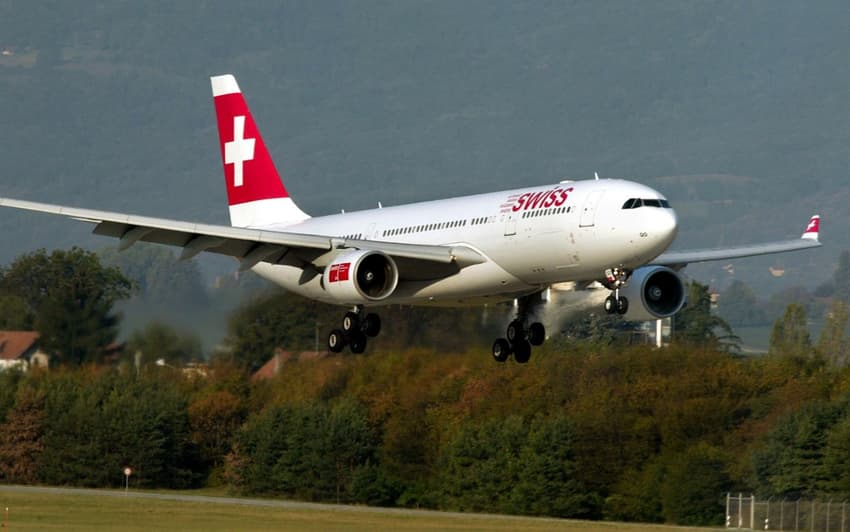Switzerland opens borders to travellers from certain countries outside Europe

Starting on Monday, people travelling from certain countries outside the European Union and the Schengen zone are permitted to come to Switzerland.
Travellers from Algeria, Australia, Canada, Georgia, Japan, Morocco, New Zealand, Rwanda, South Korea, Thailand, Tunisia and Uruguay are now permitted to enter Switzerland.
Access is also given to residents of some EU states outside the Schengen area — Bulgaria, Ireland, Croatia, Romania and Cyprus.
READ MORE: EXPLAINED: The health rules visitors to Switzerland should know about
The decision to re-open Swiss borders to these arrivals was made in late June in tandem with the EU.
But while the EU permitted entry from these third countries from July 6th, Switzerland delayed it until July 20th.
On June 15th, Switzerland also lifted, along with the EU, the restrictions on travel from other Schengen nations, as well as Norway, Iceland, and the UK.
However, because of the high number of Covid-19 cases in these countries, travellers from Argentina, Armenia, Azerbaijan, Bahrain, Belarus, Bolivia, Brazil, Cabo Verde, Chile, Dominican Republic, Honduras, Iraq, Israel, Qatar, Colombia, Kosovo, Kuwait, Moldova, North Macedonia, Oman, Panama, Peru, Russia, Saudi Arabia, Sweden, Serbia, South Africa, Turks and Caicos Islands and the United States, and still not allowed in Switzerland.
Travellers from the US can’t enter Switzerland right now. But that doesn’t mean that American citizens are not allowed to come here at all.
In fact, there is a difference between US nationals who live in the United States and those who reside in other countries.
The restriction applies to Americans who live in and would travel from the USA. US citizens who live in the countries deemed as ‘safe’ by the Swiss government, including most of the EU as well as Norway and Iceland, can travel to Switzerland.
Only countries whose infection rates are the same or better than the Swiss average will be given the green light to enter.
Switzerland uses three criteria to determine whether a given nation is ‘high-risk’: if a country has had more than 60 new infections per 100,000 inhabitants in the last 14 days, if it does not have reliable data on the disease, or if several people carrying the virus enter Switzerland from the same country.
Comments
See Also
Travellers from Algeria, Australia, Canada, Georgia, Japan, Morocco, New Zealand, Rwanda, South Korea, Thailand, Tunisia and Uruguay are now permitted to enter Switzerland.
Access is also given to residents of some EU states outside the Schengen area — Bulgaria, Ireland, Croatia, Romania and Cyprus.
READ MORE: EXPLAINED: The health rules visitors to Switzerland should know about
The decision to re-open Swiss borders to these arrivals was made in late June in tandem with the EU.
But while the EU permitted entry from these third countries from July 6th, Switzerland delayed it until July 20th.
On June 15th, Switzerland also lifted, along with the EU, the restrictions on travel from other Schengen nations, as well as Norway, Iceland, and the UK.
However, because of the high number of Covid-19 cases in these countries, travellers from Argentina, Armenia, Azerbaijan, Bahrain, Belarus, Bolivia, Brazil, Cabo Verde, Chile, Dominican Republic, Honduras, Iraq, Israel, Qatar, Colombia, Kosovo, Kuwait, Moldova, North Macedonia, Oman, Panama, Peru, Russia, Saudi Arabia, Sweden, Serbia, South Africa, Turks and Caicos Islands and the United States, and still not allowed in Switzerland.
Travellers from the US can’t enter Switzerland right now. But that doesn’t mean that American citizens are not allowed to come here at all.
In fact, there is a difference between US nationals who live in the United States and those who reside in other countries.
The restriction applies to Americans who live in and would travel from the USA. US citizens who live in the countries deemed as ‘safe’ by the Swiss government, including most of the EU as well as Norway and Iceland, can travel to Switzerland.
Only countries whose infection rates are the same or better than the Swiss average will be given the green light to enter.
Switzerland uses three criteria to determine whether a given nation is ‘high-risk’: if a country has had more than 60 new infections per 100,000 inhabitants in the last 14 days, if it does not have reliable data on the disease, or if several people carrying the virus enter Switzerland from the same country.
Join the conversation in our comments section below. Share your own views and experience and if you have a question or suggestion for our journalists then email us at [email protected].
Please keep comments civil, constructive and on topic – and make sure to read our terms of use before getting involved.
Please log in here to leave a comment.